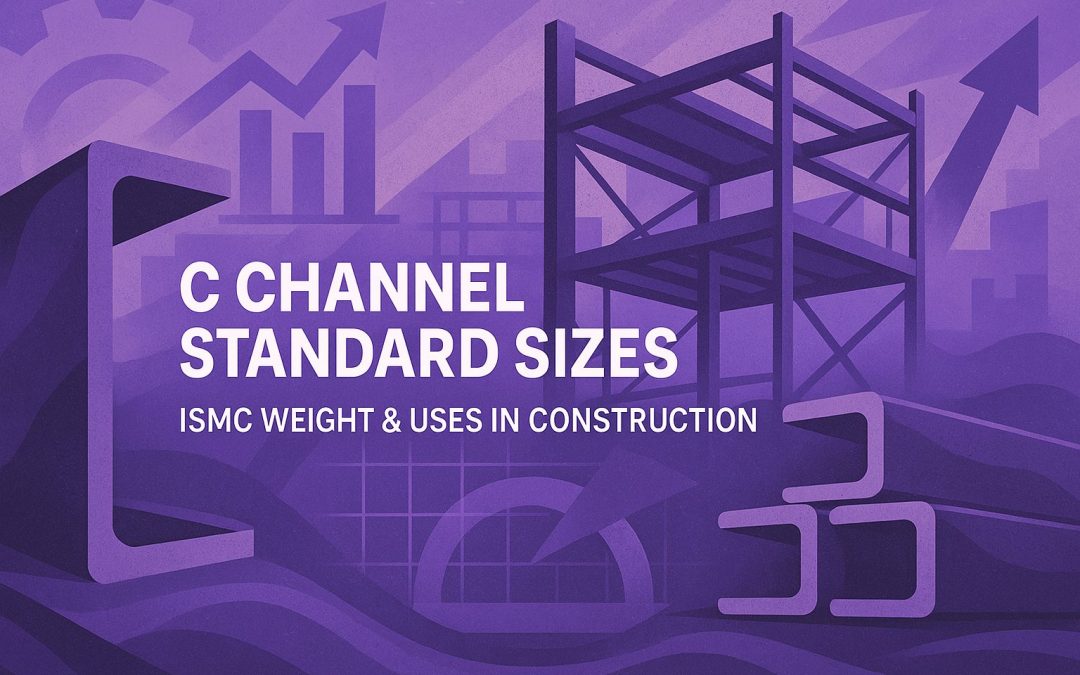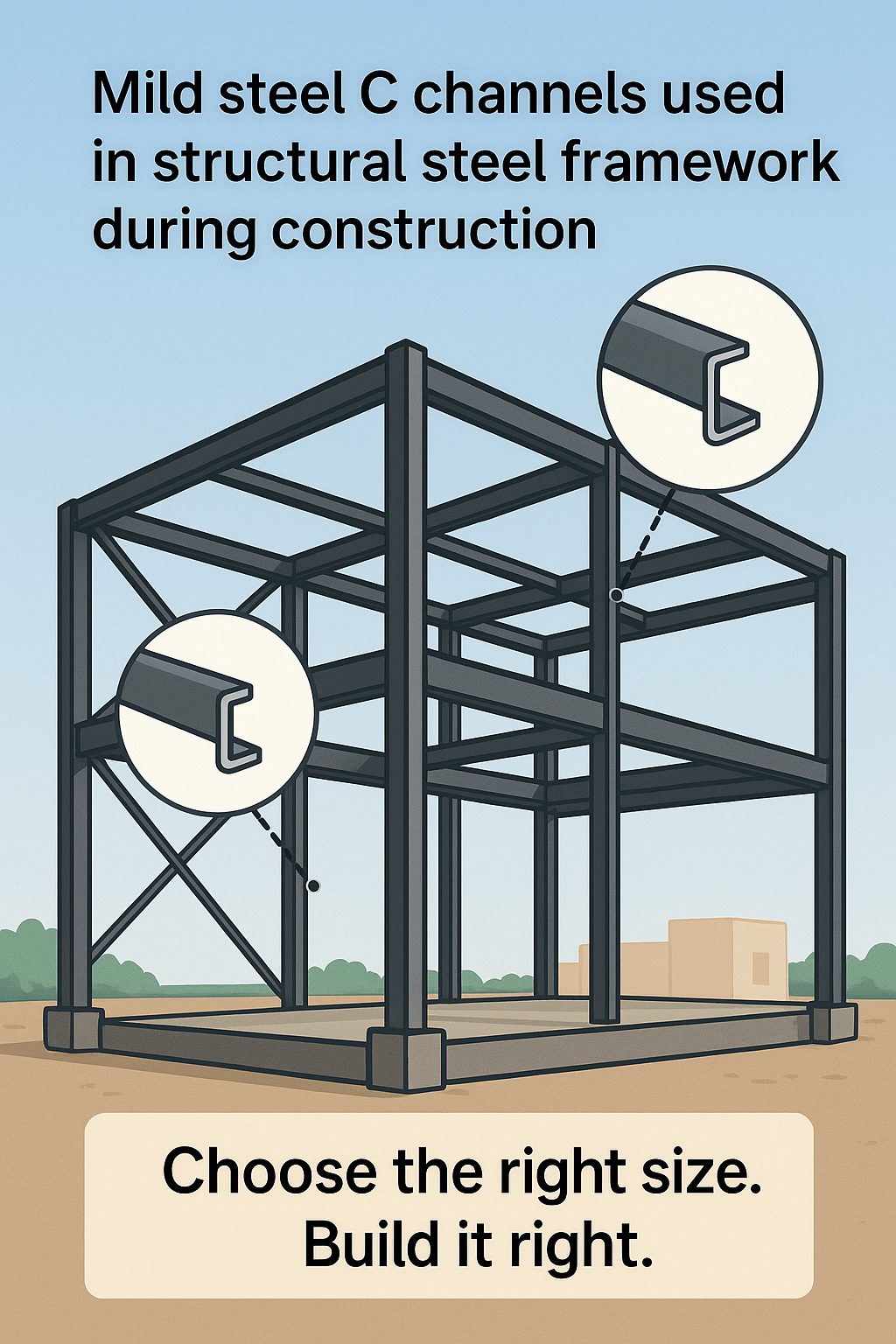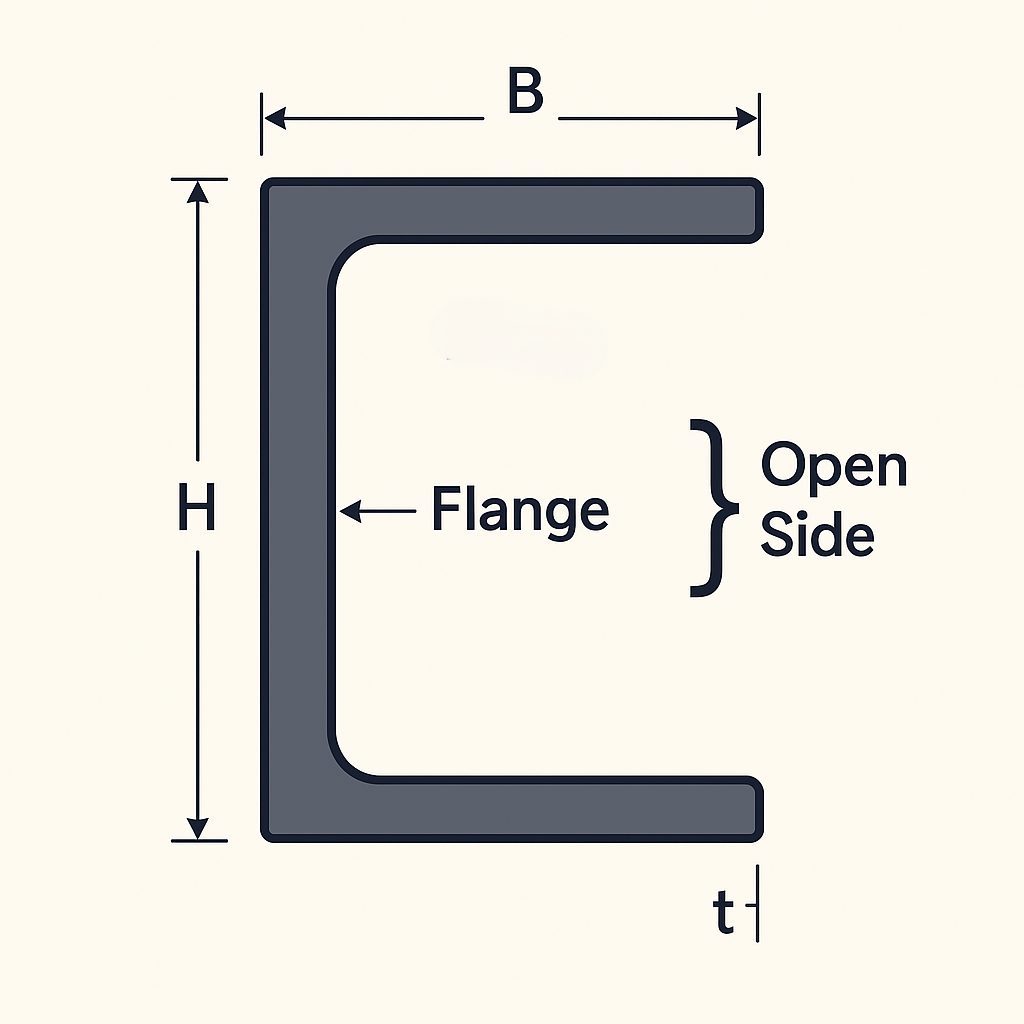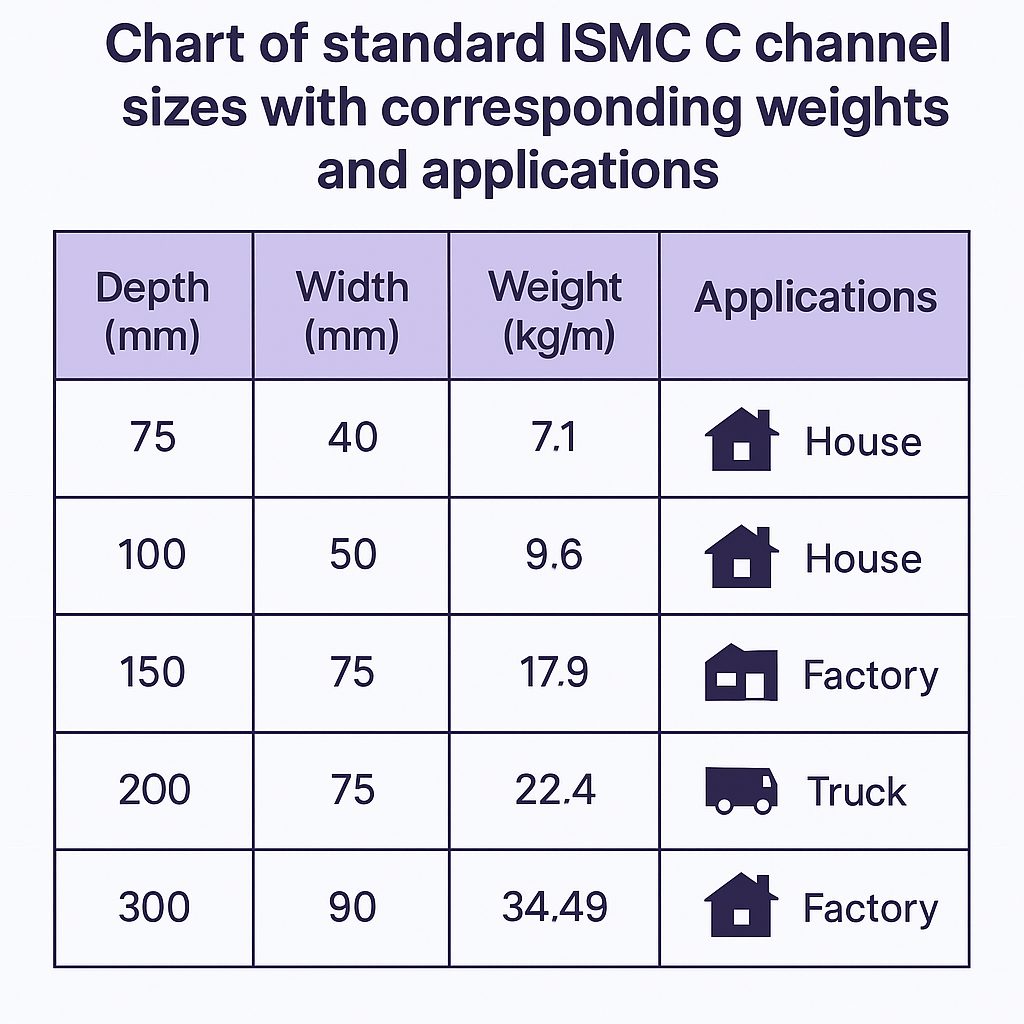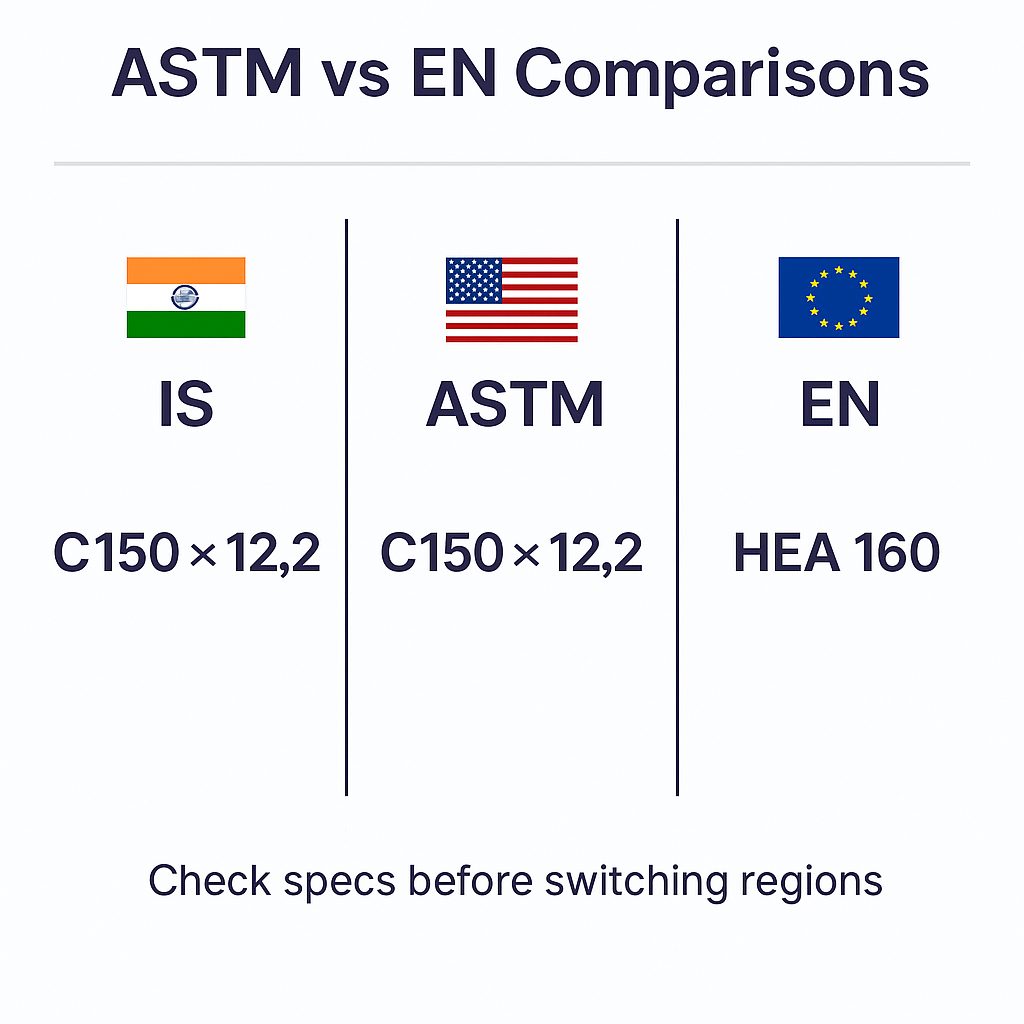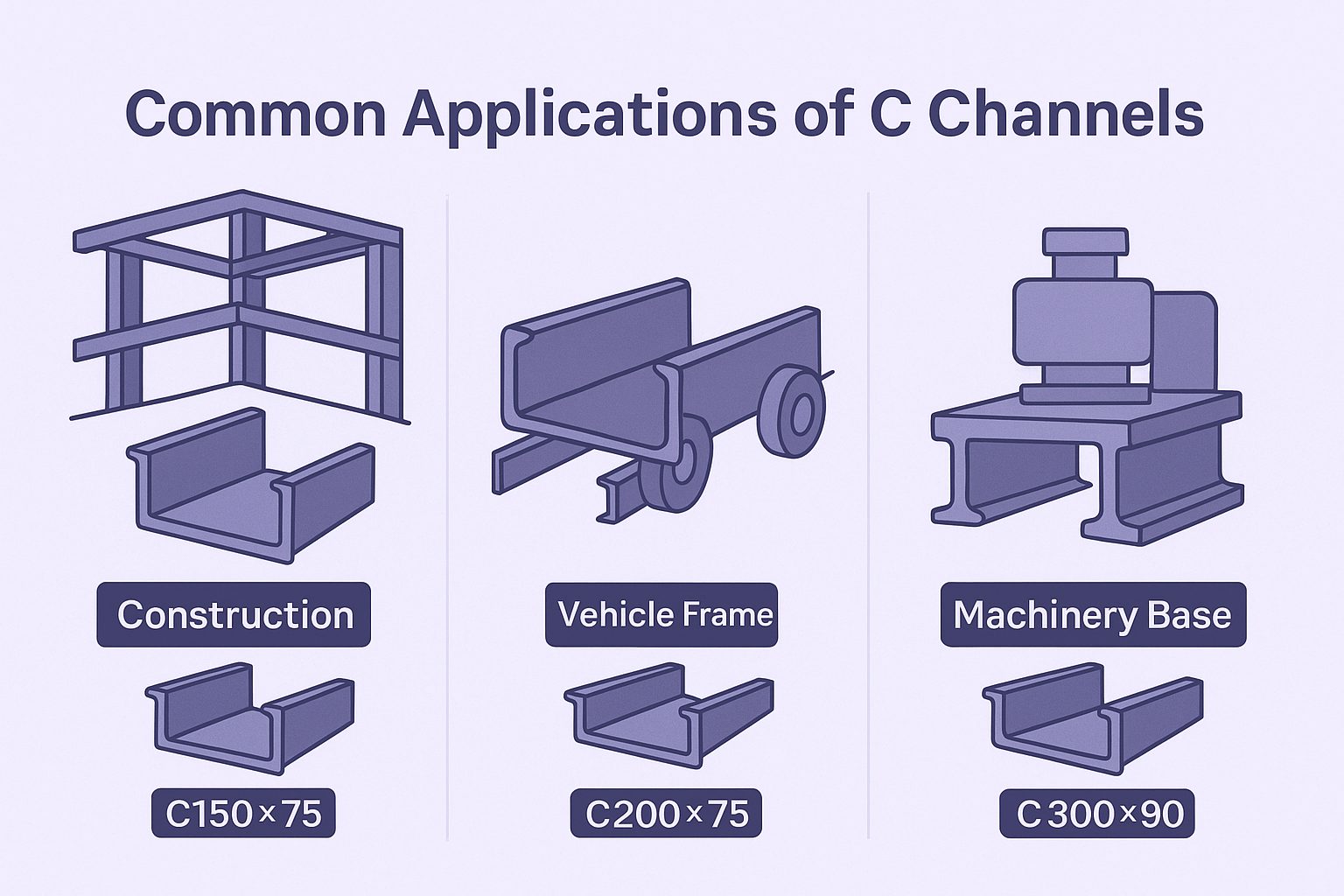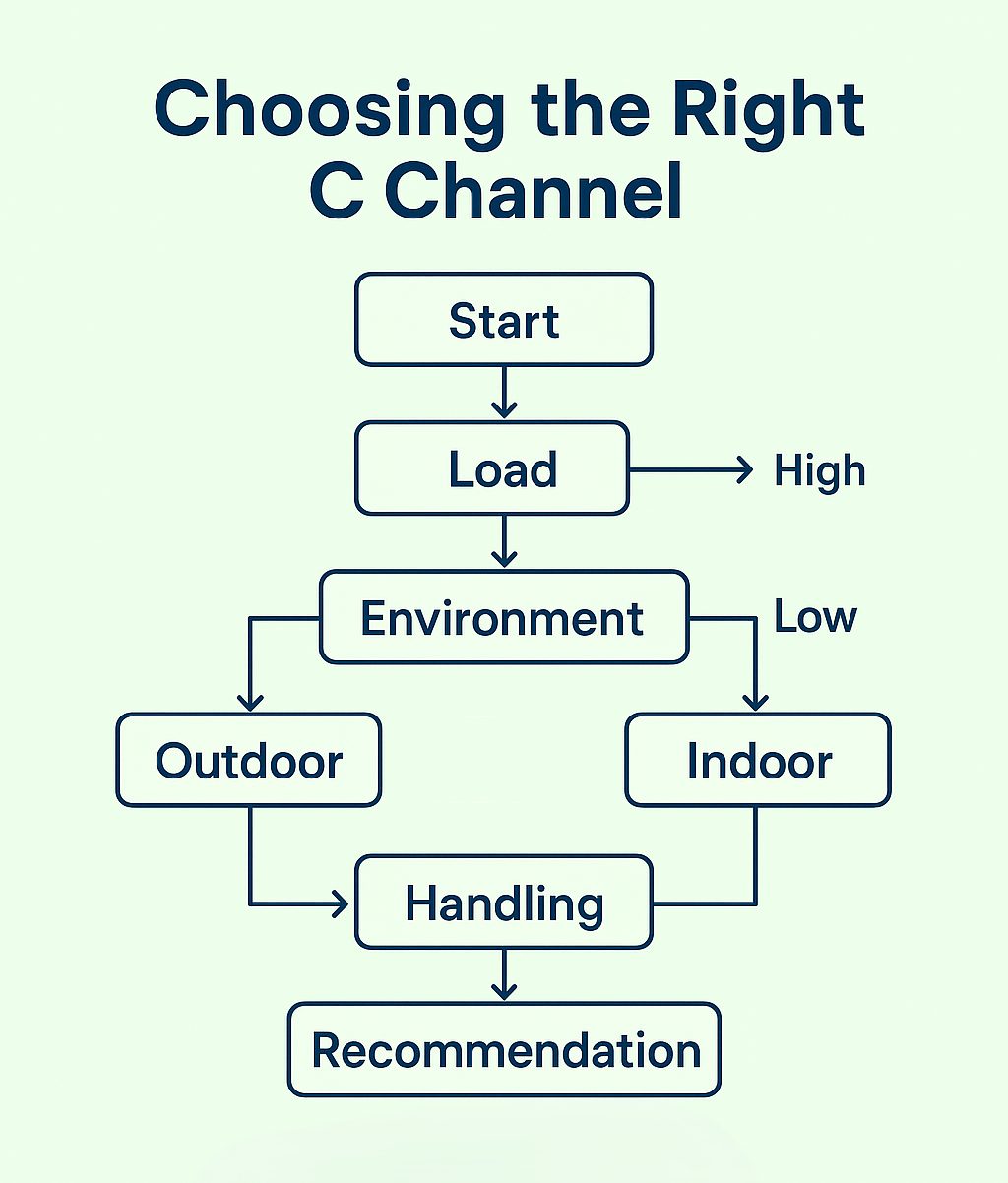Table of Contents
C channel sizes may look simple at first glance, but the size you choose can make or break a structure. These steel sections are found in building frames, machinery bases, truck chassis—you name it. And every one of those applications demands the right size, weight, and thickness.
If the channel’s too light, it bends. Too heavy, and you’re wasting money. That’s why standard sizing matters. It helps you match the section to the job, stay within budget, and avoid design errors that show up too late.
In this guide, we’ll look at how C channels sizes are made, what those designations mean, how global standards compare, and where each type is typically used. Whether you’re planning a shed or sourcing steel for an industrial plant, this is the info you’ll want before you place an order.
What is a C Channel?
A C channel is a straight piece of rolled steel with a profile that looks like the letter “C.” One side is flat—the back—and two shorter flanges extend outward on the same side. This shape gives it directional strength without adding much weight.
You’ll see these channels everywhere. They’re built into warehouse frames, mounted beneath trailers, welded into machinery bases, and used for mounting panels or supports. The open shape makes it easy to bolt, weld, or slot into other components, which is why they’re so widely used.
In India, C channels made from mild steel are often called ISMC sections, short for “Indian Standard Medium Channel”. The sizes follow IS 808 norms, which define the depth, flange width, and thickness for each profile.
Understanding C Channel Dimensions
When you’re looking at a C channel, three numbers define what you’re working with: depth, flange width, and web thickness.
- Depth is the distance from the back of the channel to the tip of the flanges. It tells you how tall the section is.
- Flange width is how far each side lip extends from the web. Wider flanges usually mean better resistance to twisting or buckling.
- Web thickness is the thickness of the center vertical part. This is where most of the load is carried.
Let’s say you’re looking at a 150×75×6 channel. That means:
- 150 mm deep
- 75 mm flange width
- 6 mm thick web
These C channel sizes follow standards like IS 808 in India. But keep in mind—actual dimensions can vary slightly depending on the manufacturer. Tolerances matter, especially when channels are being joined, slotted, or bolted in structural frames.
Standard Size Designations
C channels are typically identified using two key numbers: the depth of the section and its weight per metre. This naming format is simple and widely used in India, especially when referring to ISMC sections.
For example, a C150 × 12.2 means:
- 150 mm is the depth of the channel
- 12.2 kg is the weight per running metre
Here’s a sample list of commonly used designations:
| Size Designation | Depth (mm) | Weight (kg/m) |
| C100 × 4.1 | 100 | 4.1 |
| C120 × 5.4 | 120 | 5.4 |
| C150 × 8.2 | 150 | 8.2 |
| C200 × 12.2 | 200 | 12.2 |
| C300 × 30 | 300 | 30.0 |
The higher the weight, the stronger the channel—assuming the material grade is the same. So a C150 × 12.2 can handle a heavier load than a C150 × 8.2, even though both have the same depth.
If you’re planning a load-bearing structure, it’s not just the depth that matters. The weight per metre gives you a better sense of how much steel is in the section—and how much load it can carry.
ASTM vs EN Standard Comparisons
Not all steel channels are created—or classified—the same way. Depending on where you’re sourcing from, the same size label can mean slightly different things. That’s because different regions follow different standards.
In India, we follow IS 808, which defines dimensions for C channels under the label ISMC (Indian Standard Medium Channel). In the U.S., the equivalent comes under ASTM standards, and in Europe, under EN norms.
Here’s a simple breakdown:
| Standard | Region | Example Label | Notes |
| IS 808 | India | ISMC 100 | Most common in domestic sourcing |
| ASTM | USA | C150 × 12.2 | Used in engineering drawings and imports |
| EN | Europe | HEA 160 | More common in structural steel from EU |
The numbers may look similar, but dimensions can vary slightly—even if the depth matches. For instance, flange widths and thicknesses in a C150 may not be identical across ASTM and EN specs.
If you’re working with international suppliers or mixed standards, always ask for a detailed section drawing before placing an order. A 10 mm difference in flange width can throw off an entire frame assembly.
Common Applications of C Channels
C channels are used where strength matters—but full solid beams would be overkill. Their shape makes them easy to mount, weld, or bolt, and that’s why they turn up across industries. Below are a few places you’ll often find them—along with sizes typically used for each.
Building and Construction
In buildings, C channels are used to frame openings, reinforce walls, and support roofs.
- Roof purlins often use something like a C200 × 75 × 6.5
- Staircase stringers might be made from a C150 × 75 × 6
- Framing and lintels in lighter structures may use C100 × 50 × 5
They’re easy to slot into masonry or bolt onto I-beams.
Vehicles and Trailers
For commercial vehicles and trailers, weight is a factor. You need a channel that’s light enough to cut fuel use but still strong enough to take a hit.
- Truck chassis rails often use a C150 × 8.2
- Trailer frames might be built with C120 × 5.4 or similar
These profiles keep the frame rigid without overloading the suspension.
Factory Floors and Heavy Equipment
In industrial environments, it’s about strength and staying power. Channels here support equipment that vibrates, loads that shift, and long-term wear.
- Machine bases often call for a C300 × 90 × 9
- Conveyor supports might use C200 × 75 × 6.5
- Rack structures can vary, but C150 × 75 × 6 is common
They’re usually welded into place, but bolted setups are also used in modular systems.
Each of these applications puts different stress on the channel—bending, load, torsion. That’s why size, thickness, and material grade always need to match the job, not just the drawing.
Choosing the Right C Channel for Your Project
Not every job needs the biggest or heaviest steel section on the list. Picking the right C channel size comes down to how much weight it needs to carry, where it’s going to be used, and what you’re working with in terms of budget and space.
Here’s how most people in the trade figure it out:
Load First, Always
If the channel’s supporting a roof, a floor, or machinery—it needs to hold that weight without bending.
- Light work like door frames or partitions? A C100 × 50 × 5 mm might do just fine.
- Roofing, platforms, or wall beams? You’ll want something like a C200 × 75 × 6 mm or stronger.
- For heavy equipment bases or long spans, go heavier—C300 × 90 × 9 mm is common.
Always check the load span tables or ask your steel supplier for a recommendation if you’re unsure.
Think About the Environment
Where the channel is going matters. Steel reacts differently depending on the setting.
- Outside, exposed to weather? Use galvanised or painted channels to prevent rust.
- Inside a workshop or warehouse? Standard mild steel works fine unless it’s humid or near chemicals.
- Coastal or industrial zones? Consider coated or stainless steel—it lasts longer even if it costs more upfront.
Handling & Installation
Big sections are strong, but they’re harder to move, fix, and fit—especially on smaller sites.
- For small builds or indoor work, a lighter channel is easier to handle.
- In tight spaces, oversized sections can slow you down or need extra support during installation.
- If it’s going to be bolted or drilled, check if the flange width gives you enough room to work with.
Don’t Overbuy
Sometimes the safest choice isn’t the biggest—it’s the right one.
A C150 × 75 × 6 mm might be overkill if the job only needs a lighter section. You’ll spend more not just on steel, but also cutting, welding, and lifting it.
Get your spec right, and you won’t waste time or money fixing mistakes later.
If you’re ever in doubt, call your steel vendor. They’ve probably supplied channels for similar builds and can tell you straight what works and what’s overbuilt.
Conclusion
Getting the right C channel isn’t just about checking a size chart. It’s about understanding what the steel needs to do—how much load it’ll take, where it’ll sit, and what conditions it has to survive.
A channel that works for a warehouse roof won’t cut it for a machine base. And overshooting the spec just burns through your budget. That’s why knowing the C channel standard sizes, reading the designations correctly, and comparing regional standards matters.
Whether you’re sourcing for a building project, factory floor, or vehicle frame, start with the basics: load, environment, and handling. Then match that with the right depth, weight, and material finish.
And if you’re ever stuck between sizes, don’t guess. Check your drawings. Talk to your steel supplier. Ask for a load table. A little time upfront saves a lot of cutting, rework, and cost down the line.
Looking to procure steel?
Tata nexarc helps manufacturers, builders and MSMEs source certified steel products, compare prices, and choose the right grade as per IS codes—with complete traceability and procurement confidence.
FAQs
What is the maximum size of C channel?
What is the length of a C-channel?
- 6 meters (approximately 20 feet): Used in construction work and structural applications
- 12 meters (approximately 40 feet): Used in construction projects requiring longer channels to reduce the number of joints and give higher structural integrity
What size is a 100mm channel?
- 100 mm is the height/depth
- 50 mm represents the width of the Flanges
- 5 mm is the thickness
What size is a 125 C channel?
- 125 mm is the depth or height
- 65 mm is the horizontal breadth of the channel
- 6 mm is the thickness
What is the difference between ISMC and PFC channels?
Can C channels be used as beams for roofing or mezzanines?
Are galvanised C channels available in standard sizes?
What is the minimum thickness available for C channels?
Do C channels require welding or bolting during installation?
How do C channels compare to angle sections in strength?
A product manager with a writer's heart, Anirban leverages his 6 years of experience to empower MSMEs in the business and technology sectors. His time at Tata nexarc honed his skills in crafting informative content tailored to MSME needs. Whether wielding words for business or developing innovative products for both Tata Nexarc and MSMEs, his passion for clear communication and a deep understanding of their challenges shine through.
